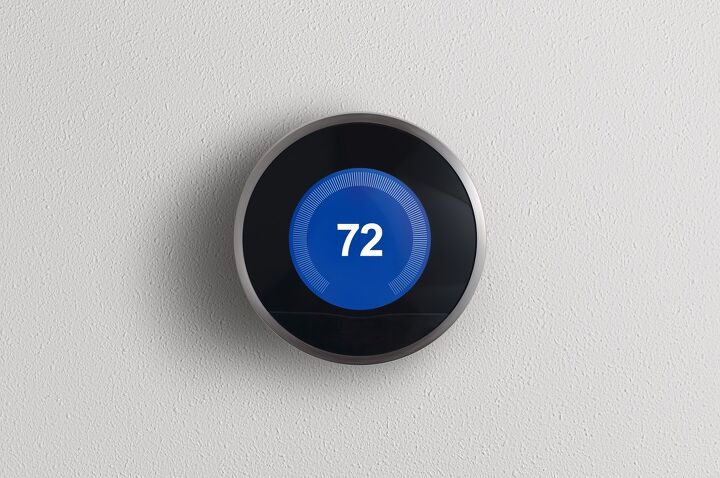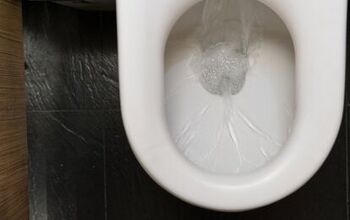Why Does My Thermostat Change By Itself? (Find Out Now!)

Thermostats that seem to change the settings randomly can be suffering from several different ailments. A properly operating programmable thermostat may change settings if the thermostat is not programmed correctly.
Most of the issues with thermostats changing settings at random are linked to the programming functions built into the thermostat. On rare occasions, a non-programmable thermostat may change the setting at random. Diagnosing the cause of these random changes can be a challenge but is not beyond the scope of most homeowners.
Figuring out the underlying problem with a thermostat that randomly changes settings can be frustrating without a bit of knowledge. Each thermostat has its method of programming or setting schedules. While we cannot provide a detailed step-by-step for every thermostat, we can give you some general guidelines, hints, tips, and tricks to taming an errant thermostat.
Do You Need Your Thermostat Repaired or Reprogrammed?
Get free, zero-commitment quotes from pro contractors near you.

What Kind of Thermostat is Involved?
Before going any further with the diagnosis of a thermostat that randomly changes the settings, it is important to know which kind of thermostat you have. Modern thermostats come in four types.
- Non-programmable
- Programmable
- Wi-Fi-enabled
- Smart thermostats
Let’s look at each of these types and discuss why they would randomly change settings.
Non-programmable
Non-programmable thermostats are the simplest to operate and are less prone to problems such as random settings changes than any of the other types of thermostats. Using a non-programmable thermostat requires you to set a temperature manually. The thermostat then tells your HVAC system when to start and top to maintain that temperature.
Nothing fancy here. No scheduling or automatic setbacks. You set the temperature and forget it. Some people believe that non-programmable thermostats are not energy efficient. Nothing could be further from the truth. Modern non-programmable thermostats can operate a modern HVAC system with extreme efficiency.
The Problems with Non-ProgrammablesNon-programmable thermostats are not prone to problems with unstable settings. However, even many non-programmable thermostats require a battery to keep the settings stable. A low battery charge may cause the memory of the non-programmable thermostat to behave erratically.
If your non-programmable thermostat is acting strangely, the first step should be to replace the internal battery. A fresh battery almost always solves these kinds of intermittent settings problems on a non-programmable thermostat.
Programmable Thermostats
Add some memory, a bit of electronics to control the thermostat, and some simple software, and you have a programmable thermostat. Most programmable thermostats allow you to create a schedule based on a calendar week of settings. Your custom schedule can take advantage of off-peak rates or your work schedule.
For example, you may program your thermostat to raise your home’s temperature during the summer months 6 to 8 degrees above your normal setting thirty minutes after you normally leave for work. You could also program the thermostat to turn the HVAC on thirty minutes before you arrive to cool your house down to its normal temperature. The possibilities are almost unlimited with the top tier of programmable thermostats
More Things to Go WrongOn the other hand, the more bells and whistles you add to any electronic device, the more prone to failures and problems the device may become. Programmable thermostats often draw power from the HVAC unit and an internal battery to maintain the settings in case of a power failure.
Some programmable thermostats don’t deal well with voltage spikes. If your electrical service is prone to voltage spikes, brown-outs or black-outs, your programmable thermostat may have problems coping with these power fluctuations.
Things to Check on Your Programmable Thermostat
The chief reason we often see for a thermostat randomly changing settings is the programming mode. More directly, users leave the thermostat in programming mode and try to run the HVAC.
Every programmable thermostat has the means to leave the programming mode and return to run mode. Once you have created your programmed schedule, ensure that you exit the programming mode properly and put the thermostat back in run mode.
Each thermostat manufacturer has a slightly different way of leaving the programming mode and saving the settings. Consult the user manual that came with your thermostat for the proper steps to save and leave programming mode.
Check the Internal BatteryAlmost all programmable thermostats rely on power from the HVAC system to operate. Most have an internal battery that protects your settings if the power goes out. If this internal battery is low or discharged, the thermostat may act erratically as it cycles through the program or tries to operate the HVA system.
If changing the battery doesn’t solve the problem of an erratic thermostat, check the voltage of the current supplied by the HVAC control board. If you aren’t familiar with electronics and DC electrical supplies, you may need an HVAC technician to perform this test.
Faulty Control BoardIt is a rare occurrence but not unknown for the electronic control board in your programmable thermostat to fail. Failures of the control board can range from erratic behavior and random settings changes to complete shut down and an HVAC system that won’t work at all. If you suspect a bad thermostat control board, a new thermostat is probably the best option.
The Connected Thermostat – Wi-Fi Capable
Many programmable thermostats include Wi-Fi connectivity. Having your thermostat connected to your home network has many benefits. You can check the status of your HVAC system from your mobile phone. Adjustments to the settings allow you to make on-the-fly thermostat adjustments when necessary. Wi-Fi is a great convenience for some people.
However, that connectivity can lead to some issues. Home internet systems are very robust and secure if installed and managed properly. However, sophisticated hackers can invade your home network and play havoc with your life.
Losing Control of Your HomeIf you are experiencing thermostat irregularities and everything on the HVAC system and the thermostat check out, you might suspect a bit of foul play on someone’s part. Don’t discount the possibility that your Wi-Fi enabled programmable thermostat is under someone else’s control.
To regain control, change the passwords on your network and the thermostat’s Wi-Fi system if it has a password feature. Under some circumstances, you may need the help of a network specialist to determine if your system has been hacked and how best to restore your security.
Smart Thermostats
One step up from the Wi-Fi-enabled programmable thermostat is the smart thermostat. These gadgets are incredible. Smart thermostats integrate into your smart home system. This integration gives you a range of control that may amaze you. You can enjoy such things as:
- Voice control over your smart home system such as Googles Alexa
- AI technology that allows your thermostat to learn your routines and patterns and set the thermostat based on what it learns
- Integration with your other smart appliances for more efficient operation
- HVAC maintenance reminders to keep your system in top operating condition
Smart thermostats are more expensive than most of the other types of thermostats. What you perceive as random changes in your thermostat settings maybe your smart thermostat trying to learn and adapt to your routines and habits.
If you find these changes don’t fit your needs, consult the user’s manual that came with your smart thermostat. Most smart thermostats have controls and settings to override any functions that you don’t want to use.
Which Thermostat Type is Right for You?
Picking out the right thermostat for your home is often difficult. With so many options, styles, types, and configurations, just finding a thermostat that works for you is a challenge. However, we have sorted the selection process into four steps to help you make the right thermostat decision.
Step 1: Thermostat Compatibility – The Thermostat must Work with the HVAC
Your thermostat must be appropriate for the equipment in your HVAC system. For example:
- If you have a heat pump in your HVAC system, your thermostat must be compatible with the heat pump installation.
- Electric baseboard style heating demands its special type of thermostat to operate safely
- Hot water systems with a central boiler also require different styles of thermostats.
If you aren’t sure what kind of thermostat your need, consult with a trained HVAC service technician.
Step 2: Pick the Type of Thermostat that Fits Your Needs
Which thermostat type best fits your lifestyle and needs? Ask yourself some simple questions.
- Do I want to deal with programming and scheduling, or am I satisfied to set my thermostat and forget it?
- Can I save money by using a programmable thermostat to vary the temperature settings during the day based on my routine or peak rate hours?
- Is it important to me to connect to my thermostat through my smartphone to monitor my HVAC system throughout the day?
- Am I a techno-junkie who has my house integrated into a smart home system and wants to have that kind of control of my HVAC?
Step 3: Find the Right Thermostat
With that understanding of what you want from your thermostat, start shopping for features and options. If you already have an integrated home system, your options may be limited to thermostats that work with your home integration controller.
The type of equipment in your HVAC system may limit your choices as well. Some specialized HVAC systems require specialized thermostats. Check with your HVAC service technician for advice on what thermostats are appropriate for your needs and systems.
Step 4: Install the Thermostat
Installation is not as simple as it may seem. There may be four, five, or more colored wires attached to your old thermostat. Deciphering which wire to connect to which terminal on your new thermostat is not straightforward either. Most specialized thermostats have complete instructions for these multi-wire situations.
However, don’t rely on color-codes alone. While most installations follow a recognized color code, no guarantee that your system complies. If you have any doubts or questions about the wiring of your HVAC system and thermostat, get your HVAC technician to perform the installation. You can cause damage to your HVAC system or thermostat with the wrong wiring scheme.
Do You Need Your Thermostat Repaired or Reprogrammed?
Get free, zero-commitment quotes from pro contractors near you.

When Things Get Quirky
If your thermostat, no matter what style or type, begins to act irregularly, it is time to make some diagnosis. In most cases, the cause of random settings changes is traceable back to bad batteries or operator error. Don’t be frustrated with a thermostat that acts poorly. You can figure out the problem and make the corrections.
Related Articles

Dennis is a retired firefighter with an extensive background in construction, home improvement, and remodeling. He worked in the trades part-time while serving as an active firefighter. On his retirement, he started a remodeling and home repair business, which he ran for several years.
More by Dennis Howard




















![12 Washing Machine Brands to Avoid [with Recall Data]](https://cdn-fastly.upgradedhome.com/media/2023/07/31/9075781/12-washing-machine-brands-to-avoid-with-recall-data.jpg?size=350x220)






